‘Whether You Live or Die, No One Cares’: Chinese Left Helpless Amid COVID Crisis
Inside the mortuary of a top hospital in China’s fifth-most populous city of Guangzhou, dead bodies have been piled on the floor since the refrigerated chambers reached capacity. Elsewhere, long lines of cars waiting with bodies to be cremated have formed outside several morgues in the southwestern municipality of Chongqing.Up north in China’s capital, there were so many corpses that cold stores at state-run food companies have been turned into temporary storage facilities for dead bodies. The grim scenes emanating out of China in recent days, which were shared by witnesses who spoke to The Epoch Times, are reminiscent of the desperation from nearly three years ago, when COVID-19 first erupted in the country. As the rest of the world learned to live with the virus, the regime held steady to its communist-style campaign known as “zero-COVID,” which aimed to eradicate the disease through a mix of massive lockdowns, intrusive surveillance, and mandatory testing—despite the heavy economic, humanitarian, and psychological toll. Then, following nationwide unrest in November, the regime abruptly made a U-turn, relaxing the zero-COVID policy in early December. The reversal was made without forewarning or the announcement of measures for a graduated retreat from the policy. Since then, the virus has ripped through the vast population, who have been ill-prepared for its sudden surge and, after nearly three years of zero-COVID restrictions, lack natural immunity to weather the outbreak. The country is now in crisis with its health systems and frontline services overrun and overwhelmed. Judiciary and law enforcement facilities have shuttered due to widespread infections. Pharmacy shelves have been stripped bare. Hospitals, which are stretched and vastly understaffed, have tried to hire back retired workers in their efforts to keep up with the influx of COVID patients. The devastation has continued to unfold despite Beijing’s assurance on Dec. 27 that it’s “fighting a prepared battle.” “The Chinese Communist Party is all about politics,” Chinese historian Li Yuanhua, who lives in Australia, told The Epoch Times. “It never cares about people’s livelihood.” What the regime is doing now, he said, is to quickly achieve herd immunity through mass infections, so that the country can revive its faltering economy. Chaos At the Zengcheng Funeral Home in the southern port city Guangzhou, workers have been receiving bodies nonstop, 24 hours a day. “We got 90 today,” an employee told The Epoch Times on Dec. 22 on the condition of anonymity, adding that four other morgues in the city are similarly inundated. The facility has run out of vehicles for transporting corpses, the worker said. “We can’t take more at this point,” a worker from a nearby crematorium told The Epoch Times. From burners to vans to storage rooms, all were running at maximum capacity, the worker said; the bodies have filled more than 200 morgue freezers. What they said matched a pattern repeated across the nation. In Chongqing’s state-owned Shiqiaopu Funeral House, where videos have captured long queues outside the facility, the increased workload has forced a cancellation of mourning services. A resident who lives nearby, surnamed Li, told The Epoch Times that the facility has been hiring temporary staff at a cost of up to 500 yuan ($72) each day, about three times the average daily pay of a white-collar worker. People wait for medical attention at Fever Clinic area in Tongren Hospital in the Changning district in Shanghai, on Dec. 23, 2022. (Hector Retamal/AFP via Getty Images) “You hear coughing everywhere,” Li said in an interview. Because of the large number of bus drivers falling sick, she said, buses that usually come every five minutes now can take an hour to arrive. A crematorium in Yuanshi county of northern China was so strained that three of its incinerators malfunctioned, according to a notice photographed and shared on Chinese social media. The Second Affiliated Hospital of Guangzhou Medical University typically sees 40 to 50 patients dying each month, but on Dec. 23 alone, there were 22 deaths, according to a worker, who stated her surname as Liang. “It’s scary,” she told The Epoch Times. Multiple staffers handling the bodies have become ill with the virus, and Liang, who frequently interacts with them, started feeling cold on Dec. 23, she told The Epoch Times in a phone interview on the same day. “Doctors still have to work even if they test positive, unless they are seriously ill,” she said. “Positive cases are everywhere. At least in our hospital, more than 70 percent are COVID-positive by now.” The crushing pressure caused a hospital director in east China’s Zhejiang Province to post a thousand-word letter to staff on Dec. 25—which was the second day it received more than 1,000 fever patients—asking them to be prepared for a higher workload to come. By then, 1,400 employees at the hospital had become infected, according to C
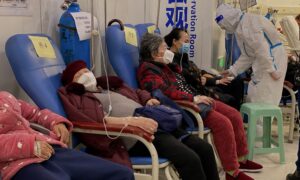
Inside the mortuary of a top hospital in China’s fifth-most populous city of Guangzhou, dead bodies have been piled on the floor since the refrigerated chambers reached capacity. Elsewhere, long lines of cars waiting with bodies to be cremated have formed outside several morgues in the southwestern municipality of Chongqing.
Up north in China’s capital, there were so many corpses that cold stores at state-run food companies have been turned into temporary storage facilities for dead bodies.
The grim scenes emanating out of China in recent days, which were shared by witnesses who spoke to The Epoch Times, are reminiscent of the desperation from nearly three years ago, when COVID-19 first erupted in the country. As the rest of the world learned to live with the virus, the regime held steady to its communist-style campaign known as “zero-COVID,” which aimed to eradicate the disease through a mix of massive lockdowns, intrusive surveillance, and mandatory testing—despite the heavy economic, humanitarian, and psychological toll.
Then, following nationwide unrest in November, the regime abruptly made a U-turn, relaxing the zero-COVID policy in early December. The reversal was made without forewarning or the announcement of measures for a graduated retreat from the policy.
Since then, the virus has ripped through the vast population, who have been ill-prepared for its sudden surge and, after nearly three years of zero-COVID restrictions, lack natural immunity to weather the outbreak.
The country is now in crisis with its health systems and frontline services overrun and overwhelmed. Judiciary and law enforcement facilities have shuttered due to widespread infections. Pharmacy shelves have been stripped bare. Hospitals, which are stretched and vastly understaffed, have tried to hire back retired workers in their efforts to keep up with the influx of COVID patients.
The devastation has continued to unfold despite Beijing’s assurance on Dec. 27 that it’s “fighting a prepared battle.”
“The Chinese Communist Party is all about politics,” Chinese historian Li Yuanhua, who lives in Australia, told The Epoch Times. “It never cares about people’s livelihood.”
What the regime is doing now, he said, is to quickly achieve herd immunity through mass infections, so that the country can revive its faltering economy.
Chaos
At the Zengcheng Funeral Home in the southern port city Guangzhou, workers have been receiving bodies nonstop, 24 hours a day.
“We got 90 today,” an employee told The Epoch Times on Dec. 22 on the condition of anonymity, adding that four other morgues in the city are similarly inundated. The facility has run out of vehicles for transporting corpses, the worker said.
“We can’t take more at this point,” a worker from a nearby crematorium told The Epoch Times. From burners to vans to storage rooms, all were running at maximum capacity, the worker said; the bodies have filled more than 200 morgue freezers.
What they said matched a pattern repeated across the nation.
In Chongqing’s state-owned Shiqiaopu Funeral House, where videos have captured long queues outside the facility, the increased workload has forced a cancellation of mourning services. A resident who lives nearby, surnamed Li, told The Epoch Times that the facility has been hiring temporary staff at a cost of up to 500 yuan ($72) each day, about three times the average daily pay of a white-collar worker.
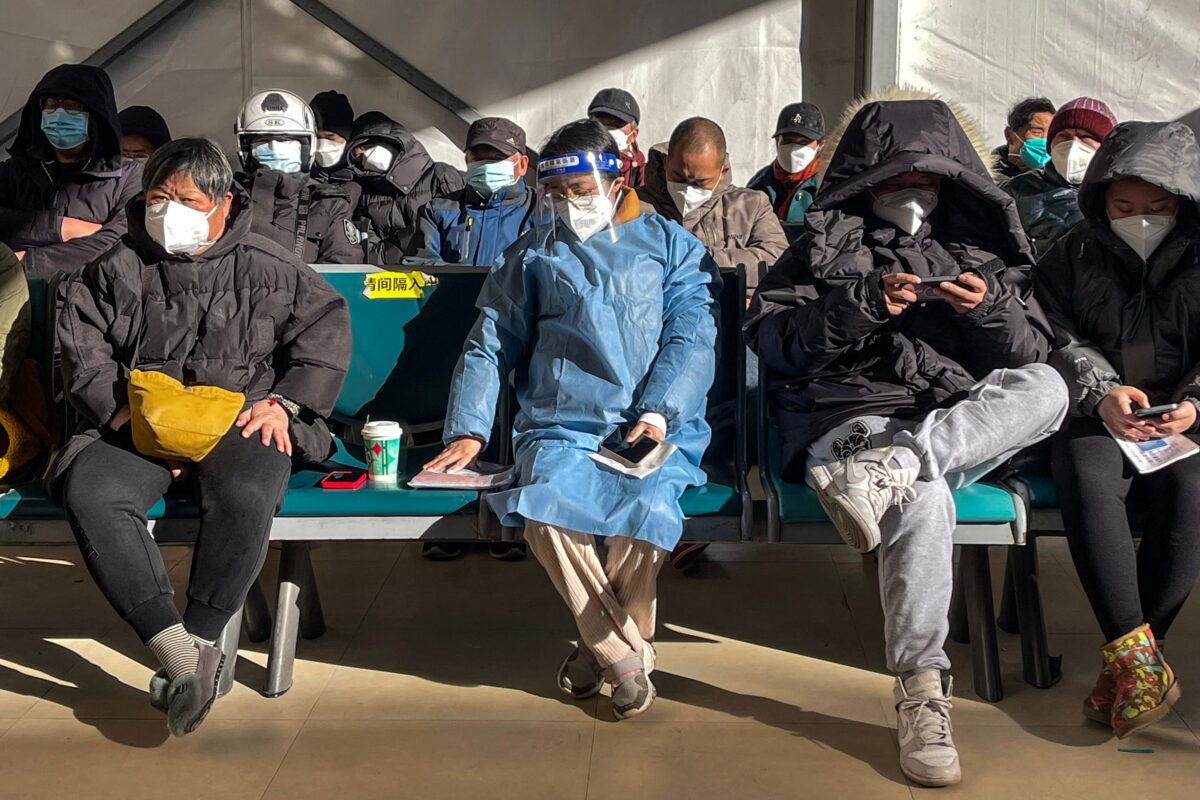
“You hear coughing everywhere,” Li said in an interview. Because of the large number of bus drivers falling sick, she said, buses that usually come every five minutes now can take an hour to arrive.
A crematorium in Yuanshi county of northern China was so strained that three of its incinerators malfunctioned, according to a notice photographed and shared on Chinese social media.
The Second Affiliated Hospital of Guangzhou Medical University typically sees 40 to 50 patients dying each month, but on Dec. 23 alone, there were 22 deaths, according to a worker, who stated her surname as Liang.
“It’s scary,” she told The Epoch Times. Multiple staffers handling the bodies have become ill with the virus, and Liang, who frequently interacts with them, started feeling cold on Dec. 23, she told The Epoch Times in a phone interview on the same day.
“Doctors still have to work even if they test positive, unless they are seriously ill,” she said. “Positive cases are everywhere. At least in our hospital, more than 70 percent are COVID-positive by now.”
The crushing pressure caused a hospital director in east China’s Zhejiang Province to post a thousand-word letter to staff on Dec. 25—which was the second day it received more than 1,000 fever patients—asking them to be prepared for a higher workload to come. By then, 1,400 employees at the hospital had become infected, according to Chinese media reports.
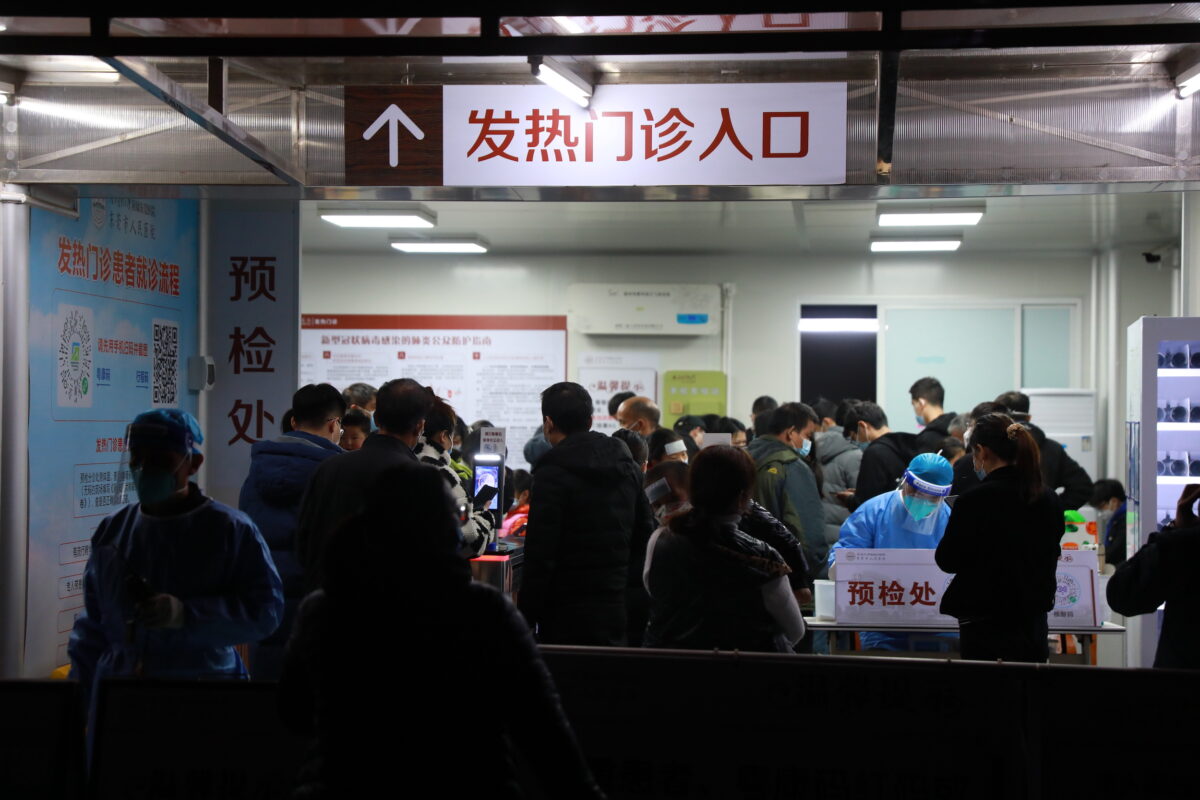
Virus Numbers Concealed
Just as they did in the early days of the pandemic, the officials have made it a challenge to assess the true picture of the worsening outbreak. By the regime’s account, only eight people have died from the disease since its lifting of COVID curbs in early December. This figure is based on the regime’s recently narrowed definition of a COVID death, which excludes all but those who die from respiratory failure and pneumonia directly associated with a COVID infection, a calculation method unseen elsewhere in the world.
The numbers depart sharply from a leaked memo from a recent high-level meeting of health officials, which estimated that 248 million people likely contracted the virus in the first 20 days of December.
Further corroborating the memo, Yu Xinle, the deputy director at the Zhejiang Health Commission, said on Dec. 25 that the daily cases in the province topped 1 million, a number that he expects will double around New Year’s Day.
The country’s top health body has stopped publishing daily virus counts since the leaking of the meeting minutes.
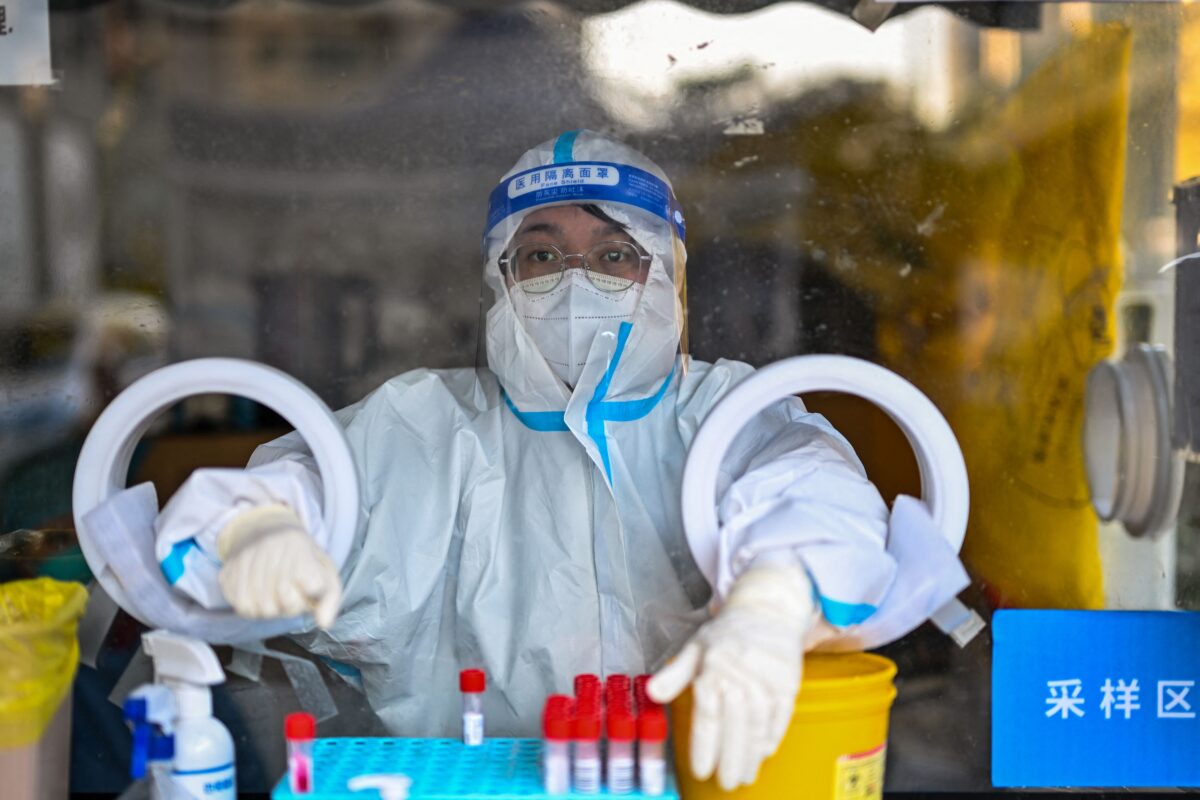
The tally was not the focus of the first remarks Chinese leader Xi Jinping made since the regime’s reversal of zero-COVID. On Dec. 26, he described a “new situation and new task” for COVID outbreak containment, which, he said, calls for more “targeted patriotic health campaigns.”
“Three years through the outbreak and they suddenly let the floodgates open,” a resident from Wuhan, the Chinese city where the pandemic emerged in 2019, told NTD, a sister media of The Epoch Times.
“Whether you live or die, no one cares. But the regular people know well that a lot of people have died.”
Rise in Deaths of CCP Elites
The latest COVID surge has also seen a rise in deaths among officials, experts, and figures closely aligned with the Chinese Communist Party (CCP).
Obituaries have littered state-run media in recent weeks, including for Zhou Zhichun, former deputy chief editor and vice president of the state-owned China Youth Daily; politician Zhu Zhihong, who once chaired the Jiangxi Provincial Committee of the Chinese People’s Political Consultative Conference; 39-year-old Peking Opera actress Chu Lanlan; Marxist economist Hu Jun; former National Sports Commission vice director Liu Ji; the designer of the mascots from the 2008 Beijing Olympics, Wu Guanying; as well as dozens of illustrious professors at two of China’s most prestigious academic institutions, Peking University and Tsinghua University.
Almost none of the obituaries listed the cause of death.
Tang Weiguo, former chairman of the board at Shanghai Kehua Bio-Engineering Co., China’s largest manufacturer of medical diagnostic kits and a COVID testing kit supplier, died on Dec. 25 at the age of 66. The company attributed his death to a complication of underlying disease from COVID-19.
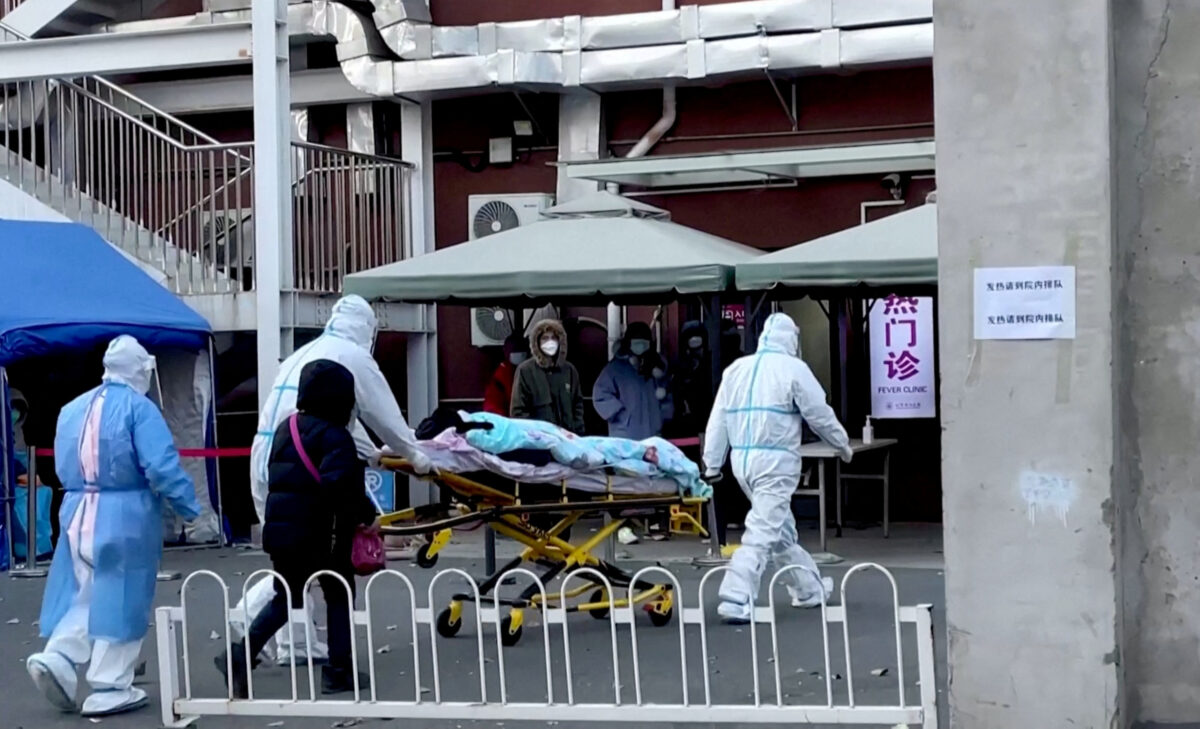
Heng He, a China affairs analyst, believes that the number of Chinese elites affected by the current COVID outbreak is notable, and suggests a metaphysical factor behind the trend.
Many of them have been the core players in the regime’s power structure and committed themselves to be propagandists burnishing the CCP’s image.
“Maybe you think it isn’t a big deal, but the CCP is a crime syndicate,” he told The Epoch Times, adding that the recent uptick in cases should make people reconsider their ties with the regime. “Tying one’s life with the fate of the Party will not bring you any good.”
The idea that “you reap what you sow,” he said, has been deeply rooted in Chinese minds since antiquity.
“A popular belief in China is that good deeds will meet with good returns and vice versa, and that you could see retribution within one’s lifetime,” he said.
“In a sense, one might consider this karmic retribution.”
‘Fighting With Heaven’
The concept of “fighting,” repeatedly used in CCP rhetoric describing its anti-COVID campaigns, has been embedded in Chinese communist ideology since the Party’s inception, observers note.
“Battling with heaven is endless joy, fighting with the earth is endless joy, and struggling with humanity is endless joy,” Mao Zedong, a founding member of the Party and the first regime leader once claimed.
Sean Lin, a former lab director at the viral disease branch of the Walter Reed Army Institute of Research, sees the regime’s pledge to eliminate the virus as a show of its extremism.
While diseases fade, history shows that the viruses are never truly gone. In comparison with other countries that reopened over the summer after determining the low public health risk posed by the Omicron variant, the new COVID measures in China are political, Lin said.
Peng Dingding, a political commentator in Beijing, echoed Lin’s view.
“Throughout the entire outbreak prevention process, the Chinese government hasn’t done one thing right,” he told The Epoch Times. “Even after three years of pandemic and building so many makeshift hospitals, there’s still not enough capacity to treat patients. I really can’t understand what this country is doing.”
It’s a show of the “arrogance and ignorance of the highest Chinese leadership,” he added.
“In the fight against heaven, they have failed. In the fight against the earth, they have failed. All they know is to fight with people,” Peng said.
“He always thinks himself to be all-powerful,” he added, referring to Xi.
Luo Ya, Gu Xiaohua, and Yi Ru contributed to this report.












